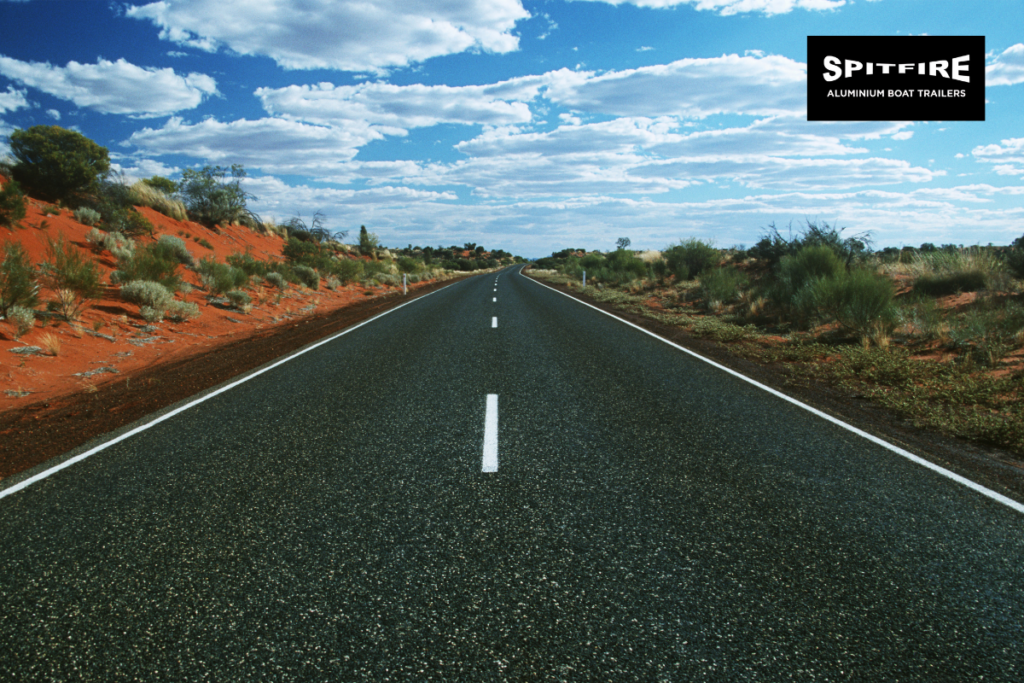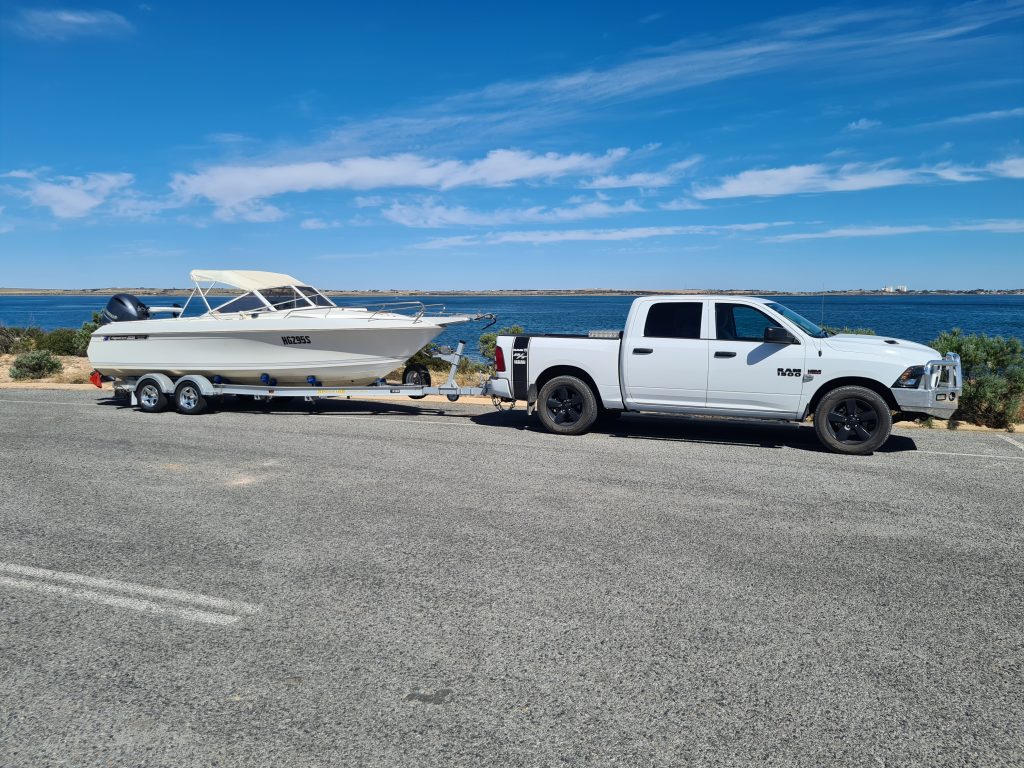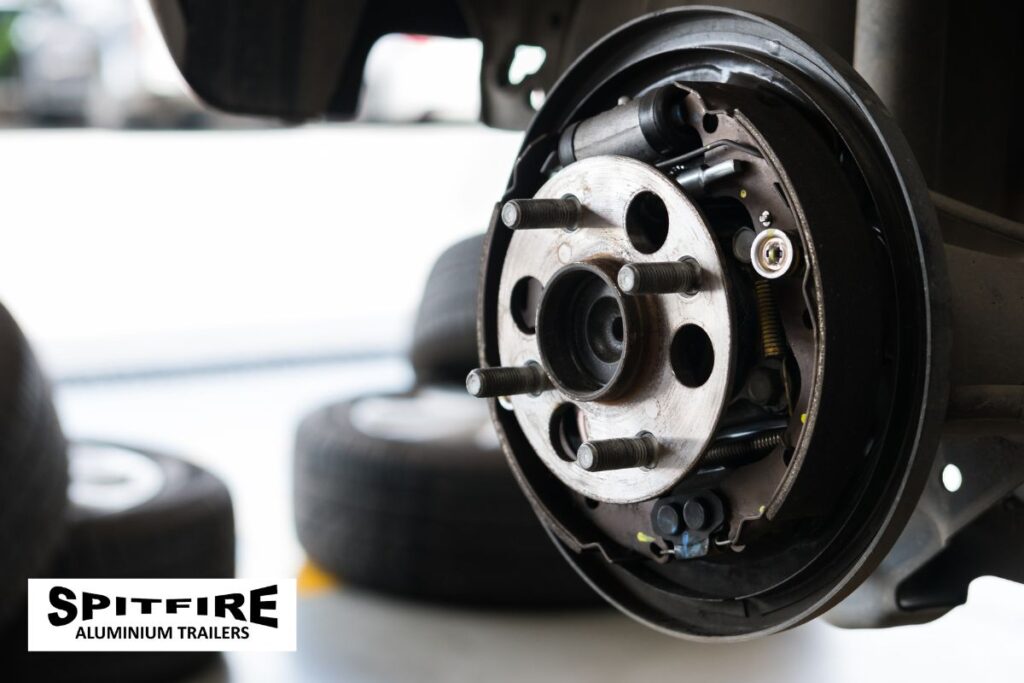Spitfire Boat Trailers
Best Practices for Long-Distance Towing with a Boat Trailer
One in three boat trailer incidents in Australia could be avoided with better preparation. At Spitfire Boat Trailers, we know long-distance towing demands more than just a sturdy trailer—it requires smart planning. Our team has helped thousands of customers safely tow boats across coastal highways and inland roads, learning firsthand what works.
best practice for boat trailer long distance towing starts with checking every bolt and strap. Even small oversights like uneven weight distribution or worn tyres can turn dream trips into nightmares. Spitfire Boat Trailers, with locations in Townsville, Brisbane, and Rockhampton, provides boat trailer towing tips that prioritise safety and compliance.
Every year, 25% of towing issues stem from overlooked maintenance. This guide breaks down simple steps to avoid common mistakes. Learn how proper hitch setup, tyre pressure checks, and emergency prep can make all the difference. Your boat’s arrival in one piece depends on it.
Key Takeaways
- Proper load balancing cuts swaying risks by over 60%.
- Regular tyre checks prevent 40% of breakdowns on long trips.
- Spitfire Boat Trailers offers free towing consultations for customers.
- Legal compliance checks are included in every Spitfire trailer inspection.
- Emergency kits must include a tyre pressure gauge and tow bar alignment tool.

Understanding the Challenges of Long-Distance Boat Towing
Preparing for long distance towing is more than just tying down your boat. Australian roads are full of challenges, from winding coastal roads to rough outback tracks. Heat, dust, and steep hills put extra stress on your vehicle and trailer.
Ignoring these issues can turn a great trip into a nightmare.
- Mountain passes strain engine cooling systems and brake efficiency.
- Extreme temperatures warp trailer frames and soften tyre rubber.
- Urban areas require sharp manoeuvring in tight spaces.
“The safest way to tow a boat trailer starts with understanding your route’s demands. Check load limits on bridges and plan fuel stops at intervals matching your vehicle’s capacity”
Weather can change quickly in regional areas, causing visibility drops or slippery roads. To prepare, check your hitch fittings every month and carry emergency gear like tyre deflation kits. Even experienced towlers face issues like trailer sway or misaligned tow balls.
Spitfire’s experts suggest doing pre-trip checks to find worn parts before they fail.
Every kilometer is important. Small mistakes, like forgetting to lock wheel chocks or ignoring tyre pressure changes, can add up over long distances. Stay on top of things by treating each part of your journey as a test of your gear and skills.
Essential Pre-Trip Preparation for Your Journey
Before you leave, make sure your boat trailer is safe for the long haul. At Spitfire Boat Trailers, we focus on steps that keep you safe. Start with a checklist made for your boat and the trip you’re on.
Create Your Comprehensive Pre-Tow Checklist
Here’s what to include in your list:
- Make sure all trailer lights, brakes, and electrical connections are working.
- Check the tire pressure, tread depth, and wheel bolts.
- Double-check your registration, insurance, and any needed permits.
- Look for wear and corrosion on the hitch components.
Weight Distribution and Load Balancing
Right weight distribution stops your trailer from swaying and keeps it stable. Try to have 10-15% of the total weight on the trailer tongue. If your boat is over 1,500kg, use a weight distribution hitch. Use a scale or ask a pro to check the tongue weight. Uneven loads can hurt your vehicle and make it unstable.
Securing Your Boat Properly
Secure your boat with:
- Four straps (bow, transom, and two side straps) tightened evenly.
- Use soft padding where straps touch the hull to avoid scratches.
- Do a final check for loose gear inside the boat or on the trailer.
Make sure outboard motors are tilted and locked to stop them from moving. Check all fasteners before you drive.
A well-prepared trailer means less stress and protects your investment. These steps are key to a safe journey. They make every mile safer for you and others on the road.

Matching Your Vehicle to Your Towing Needs
Finding the right vehicle for towing your boat trailer is essential for long distance towing safety. First, check your vehicle’s towing capacity in the manufacturer’s manual. Make sure you don’t go over the Gross Vehicle Mass (GVM) and Gross Combination Mass (GCM) limits. Here’s how to choose the right match:
| Vehicle Type | Pros | Cons |
|---|---|---|
| 4WDs | Strong off-road capability, high towing capacity | Higher fuel use, heavier weight |
| Utes | Cost-effective, agile handling | Limited towing capacity for large boats |
| SUVs | Comfortable cabin, better visibility | May need towbars and weight distribution hitches |
Work out your total load: include your boat’s weight, trailer, and gear. Compare this to your vehicle’s GCM. Using a vehicle that’s too small can put a lot of strain on your brakes, which is dangerous. Spitfire Boat Trailers suggests checking your transmission cooling system to avoid overheating on long trips.
Consider if your vehicle can handle Australia’s terrain and gradients. 4WDs are great for rough roads, while utes are better for shorter trips. Always check your towing a boat trailer guide for specific details. If you’re unsure, get advice from a specialist to avoid overloading. Safety is not just about following laws—it’s about making it to your destination safely to enjoy your trip.
Best Practice for Boat Trailer Long Distance Towing
At Spitfire Boat Trailers, we make sure your trailer is ready for long trips. This starts with setting it up right. Proper preparation stops common towing problems and keeps your trip smooth. Here’s how to focus on safety and performance:
Trailer Hitch Setup and Connection
Start by matching your hitch to your vehicle’s towing capacity. Check the weight ratings and make sure the hitch fits your boat’s size. Safety chains should form a triangle under the tongue to prevent disconnection.
Before you leave, test the hitch by gently rocking the trailer. This confirms it’s secure. Spitfire suggests checking mounting bolts often and lubricating hitch parts to avoid wear.
Tyre Pressure and Condition Requirements
- Check tyre pressure weekly, adjusting to manufacturer guidelines for loaded trailers.
- Inflate tyres when cool for accuracy; overinflated tyres risk blowouts; underinflated tyres cause overheating.
- Carry a pressure gauge and a quality spare tyre rated for your load. Inspect tyres for cracks, uneven wear, or damage every 200km.
Brake System Checks and Maintenance
Electric or hydraulic brakes need regular testing. Test brake controllers at low speeds first to confirm responsiveness. Clean brake drums and adjust linings if worn—spongy brakes mean unsafe stopping distances.
Regularly lubricate moving parts and replace worn cables. For long trips, schedule brake checks every 500km to prevent failure.
Remember: trailer hitch best practices aren’t just technical—they’re about peace of mind. Follow these steps to protect your investment and stay compliant with Australian towing laws.
Mastering Driving Techniques for Safer Towing
Learning the right driving techniques is essential for safe long-distance towing. Spitfire Boat Trailers provides expert advice to help you stay safe. It’s important to know how your vehicle handles with a trailer attached.
“Adjusting your driving habits is the first step to safer towing,” says Spitfire’s expert team. “Small changes make a big difference in control and safety.”
Adapting Your Driving Style for Towing
Drive defensively by keeping a 4-second gap from the car in front. Plan stops 50% earlier than usual. Use wider turns to avoid hitting curbs. Stick to 90-100 km/h on highways to save fuel and reduce strain.
Check your mirrors often to keep an eye on your trailer.
Navigating Challenging Road Conditions
Australia’s roads can be tricky. Here are some tips:
- Coastal Roads: Slow down on bends and check clearance signs before narrow bridges.
- Mountain Descents: Use engine braking in lower gears instead of constant braking.
- Urban Areas: Signal turns early to give others time to adjust.
Managing Trailer Sway and Stability Issues
Sway can happen due to crosswinds or uneven loads. To prevent it, do the following:
- Maintain steady speeds and avoid sudden steering
- If sway starts, gently ease off acceleration and avoid overcorrecting
- Recheck load balance before departure
Practice these tips often to improve your skills. Spitfire Boat Trailers is here to support you every step of the way.
Australian Legal Requirements and Regulations for Boat Towing
When towing a boat trailer in Australia, it’s important to follow the laws. This ensures safe and legal travel. Make sure to check weight limits, lighting, and registration before you start.
- Weight Limits: Check your vehicle’s towing capacity and trailer’s gross combination mass (GCM). Exceeding limits risks fines and unsafe driving.
- Lighting: All trailers must have functioning lights, including brake lights, indicators, and side markers. Non-compliant lighting could lead to penalties.
- Registration and Plates: Trailers over 2,000kg require registration. Ensure number plates are clearly visible and securely mounted.
- State Variations: Queensland enforces strict oversize load rules. Cross-border trips? Confirm speed limits and load restrictions in each state.
Speed restrictions apply when towing. Most states limit trailer speeds to 90-100 km/h on highways. Projecting loads must be flagged with hazard signs if over 400mm beyond the trailer. Regular essential trailer safety checks help avoid legal issues and breakdowns.
Long haul towing recommendations include checking load distribution, tire pressure, and brakes before departure. Consult your state’s road authority for updates. Prioritize safety and legality to enjoy stress-free journeys. For tailored advice, contact Spitfire Boat Trailers.
Preparing for Emergencies on Long Haul Journeys
Even with careful planning, emergencies can happen on long trips. Spitfire Boat Trailers says it’s key to be ready for surprises. A good plan keeps you safe, even when things go wrong.
Essential Emergency Kit Components
- Multitool with screwdrivers and pliers
- Reflective triangles and hazard triangles
- Portable air compressor for tyre inflation
- Emergency beacon or satellite communicator
- Trailered boat-specific spare parts (bearings, bolts)
Roadside Repair Basics
Stay calm and follow these steps for minor fixes:
- Secure the trailer with wheel chocks before any work
- Use a torque wrench to avoid over-tightening bolts
- Test electrical systems with a multimeter before driving
When to Call for Help
| Scenario | Action |
|---|---|
| Trailer bearing overheating | Pull over immediately and contact a trailer specialist |
| Loose wheel assembly | Do not drive further – request roadside assistance |
| Electrical system failure | Use emergency beacon and await help |
We suggest having a list of trusted trailer mechanics. Always put safety first by checking risks before fixing things.

Trailer Maintenance During Extended Journeys
Keeping your boat trailer in top shape during long trips is vital. Regular checks can stop problems like overheated brakes or loose parts. Here’s how to ensure your trailer stays in good condition:
- Daily Checks: Look over wheel bearings, brakes, and lights every day. Check tires for heat and listen for odd sounds while driving.
- Mid-Journey Stops: At rest stops, check the coupling and tighten bolts. Spray wheel hubs with water to cool brakes if they’re hot.
- Overnight Halts: Lift wheels to spin them freely—grinding means bearing damage. Replenish fluids and lubricate hitch pins before driving again.
| Supply | Purpose |
|---|---|
| Lubricant spray | Protects moving parts from corrosion |
| Brake cleaner | Removes salt or dust buildup |
| Travel-sized torque wrench | Ensures bolts stay secure |
In dusty areas, cover electrical connectors with plastic bags. Coastal drivers should rinse trailers after trips to stop rust. Carry a microfiber cloth to clean lights and sensors often. Spitfire Boat Trailers suggests a 10-minute check every 200km to find problems early. These tips make regular stops into chances to maintain your trailer, ensuring a safe journey.
Conclusion: Ensuring Safe and Successful Long-Distance Towing
Safe towing is more than just getting to your destination. It’s about being ready, knowing what’s happening, and acting fast. Make sure to check your trailer often, tie everything down well, and drive carefully based on the road.
Following tips like checking tyre pressure, keeping brakes in good shape, and watching how heavy your load is can help a lot. Even small mistakes can cause big problems. So, being consistent is key.
At Spitfire Boat Trailers, we’re known for trailers made for Australian roads. Our trailers are tough and safe, perfect for any journey. Visit us in Townsville, Brisbane, or Rockhampton to see our trailers. Our team can help you pick the best trailer and teach you how to keep it safe.
Call 1300 483 115 for advice that fits your needs. Safe towing is a way of thinking, not just about the equipment. With the right preparation and tools, every trip is an adventure to enjoy, not a worry.

